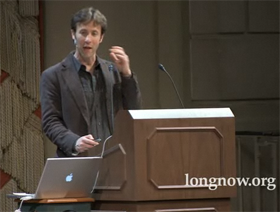
Newspaper and magazine publishers see the the arrival of tablet computers like the iPad as a salvation for their ailing industry. They expect it to lower delivery costs and move them from a once-a-day news source to a constant, immediate service.
The excitement is justified, but misdirected. If tablets do save publishing, it’ll won’t be because they’re digital or more up t. It’ll be because they make newspapers interactive, and in doing so, let any reader place an ad right on the page they’re reading, opening up an entirely new revenue stream. Read more »







 @
@ Tags:
Tags: 








 There’s a lot of news around Augmented Reality, fueled by a flurry of apps for location- and video-enabled smartphones like the Android and the iPhone. Here’s a good overview of how some of them are blending the world around us with the virtual world. Read the full article at
There’s a lot of news around Augmented Reality, fueled by a flurry of apps for location- and video-enabled smartphones like the Android and the iPhone. Here’s a good overview of how some of them are blending the world around us with the virtual world. Read the full article at 


 Like all images on the site, the topic icons are based on images used under Creative Commons or in the public domain. Originals can be found from the following links. Thanks to
Like all images on the site, the topic icons are based on images used under Creative Commons or in the public domain. Originals can be found from the following links. Thanks to